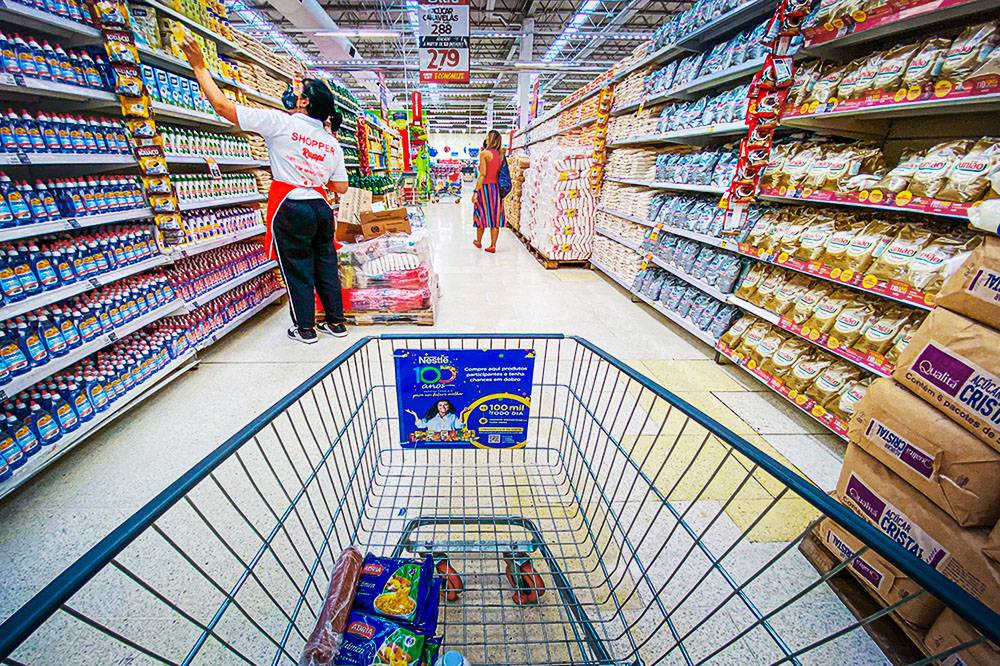RIO DE JANEIRO, BRAZIL – When there is inflation, “prices go up by elevators and salaries go up by stepladders.” The phrase is attributed to former Argentine President Juan Domingo Perón in the 1970s, but it may accurately describe the scenario in Brazil in 2021.
Factors such as the US$1.32 price of a liter of gasoline and rising food prices already speak volumes. Before the pandemic, a liter of gasoline could be had for less than a dollar.
The big problem, economists explain, is that the rise in the price of essential goods is accompanied by an income that is barely growing or even falling for the majority of the population.

“In Brazil, income is currently chained to the foot of the ladder, while prices keep rising,” says economist Juliana Inhasz, coordinator of the undergraduate economics program at Insper.
Inflation indexes are already reflecting this scenario. In July, the IPCA, Brazil’s main inflation measure, reached its highest level in 20 years. The index has gained 8.99% in 12 months, and Focus Bulletin analysts expect it to end the year at over 7%, well above the central bank’s target of 5.25%.
Brazil had not reached this annual level since 2015 when unemployment was lower and the interest rate much higher (14.25%, compared to 5.25% today).
And the indices show only a brief snapshot. The biggest challenge with everything consumed in Brazil is that some products whose prices have risen the most are also essential goods, such as energy and food.
Food and beverages rose 13% in 12 months on the IPCA’s general average;
The worst performers were products such as soybean oil, tomatoes, and rice, which rose 80% and 40%, respectively; Gasoline rose 40%, ethanol 57%, and diesel 36%; Household electricity consumption prices increased by 20%.
Therefore, for Simão Silber, a researcher at the Economic Research Institute Foundation, which measures the IPC, the inflation index in the city of São Paulo, the answer to the question of whether Brazil has become more expensive is “it depends.”
“Prices have gone up for everyone. But because Brazilian society is unequal, this increase is almost irrelevant for some groups,” says Silber. “But if we take the base of the pyramid, it’s devastating.
In families with a broader basket of goods, the increase in necessities may be partially offset by fewer pandemic-related price increases. Prices for health, education, and clothing services have been below the inflation rate or, in some cases, have even declined.
For example, Ipea, affiliated with the Ministry of Economy, calculates that poorer families felt inflation almost twice as much.
SALARY BUYS LITTLE
Another yardstick for analyzing how expensive costs really are in Brazil is to compare them with the minimum wage. And in this regard, the news is not very encouraging.
In the city of São Paulo, the price of the basic food basket is now almost tied to the minimum wage, which has never been the case since the index began calculating it in 2017.
The basket for four people was R$1,064.79 (US$200) in July, according to a survey conducted by Procon-SP in collaboration with the Interministerial Department of Statistics and Socioeconomic Studies (Dieese).
Rent, electricity, and other daily necessities are not included in this amount.
“We see an increase in the basket of staple goods, which even defies the inflation order,” said Marcus Vinicius Pujol, director of the School of Consumer Protection and Defense of Procon-SP. “And our shopping cart is already calculated with the cheapest brands, there is no way to tell the consumer to switch.”
For the poorest population, the lack of protections like food stocks exacerbates food insecurity in times of inflation – projections are that Brazil will already be back on the hunger map by 2020.
Minimum wage increases also have not kept pace with inflation, while the 40% of the population living in informal employment is not even covered by the legislation. “So the truth is that many people don’t even manage to earn enough to consume the basic food basket,” Pujol says.
PERFECT STORM
Last year, bets had been made that Brazil would not see very high inflation, with unemployment stagnating at 15% and no improvement in sight.
However, this time, inflationary pressures are coming mainly from the supply side, with few products circulating in the market. Thus, prices have continued to rise despite low demand and the impoverishment of the population.
Among the reasons for the price increase in Brazil are the high dollar and the commodity cycle, which favors food exports but reduces supply in the domestic market as producers seek higher prices abroad in dollars.
In addition, factors such as high oil prices abroad and the water crisis, which led to higher energy costs, worsened the scenario. Since May, the electricity bill has been on the “red list,” the most expensive, because of the drought.
The economic recovery after the restrictions against Covid-19 and the remnants of the logistical bottlenecks that occurred at the beginning of the pandemic, such as the lack of raw materials, are related to global inflation.
According to the United Nations, food prices have risen more than 30 percent worldwide due to high demand from countries such as China and the United States.
“In the case of Brazil, however, the price increase is due to both external and internal factors,” said Fipe’s Silber, who believes it is unlikely that prices will fall in the short term.
“The situation is so complicated that people are literally eating less. If poverty were not so great, the pass-through of increased production costs to final prices might be even greater,” said Costa, who believes that simply raising rates is not enough, but that action must be taken to alleviate the supply crisis and expand the fight against poverty.

